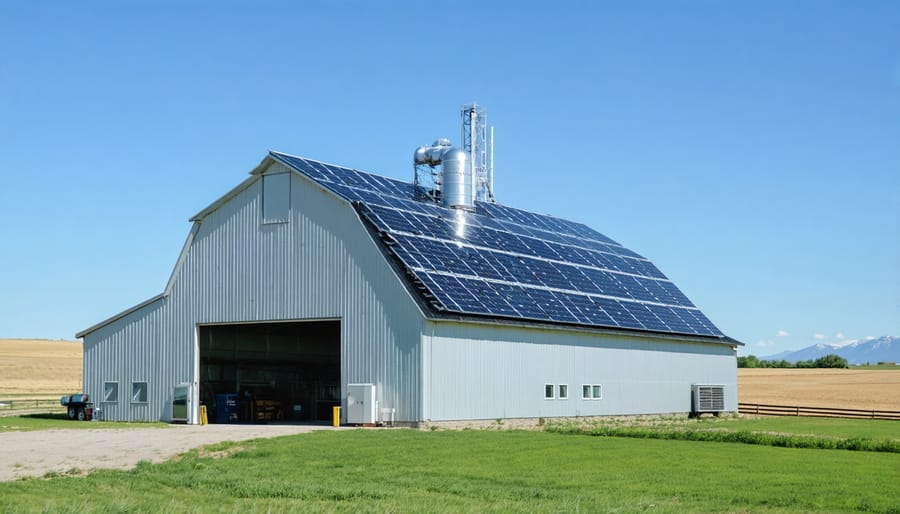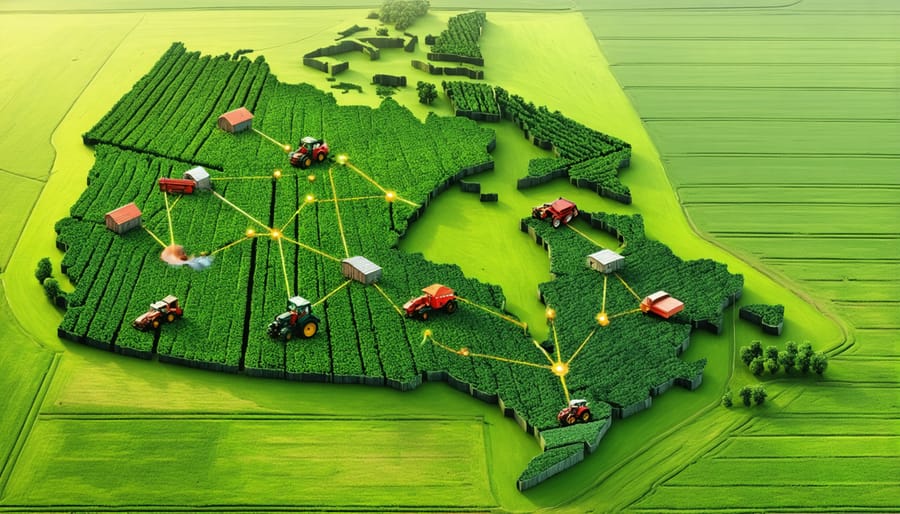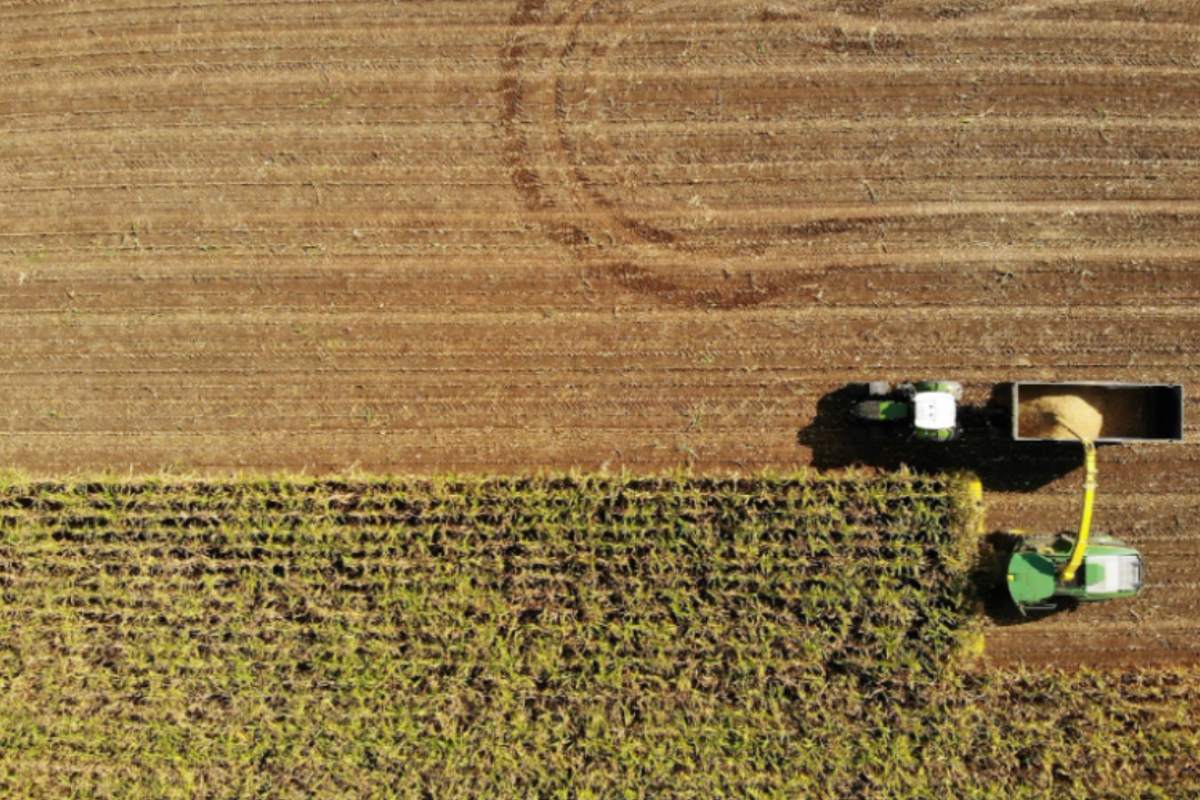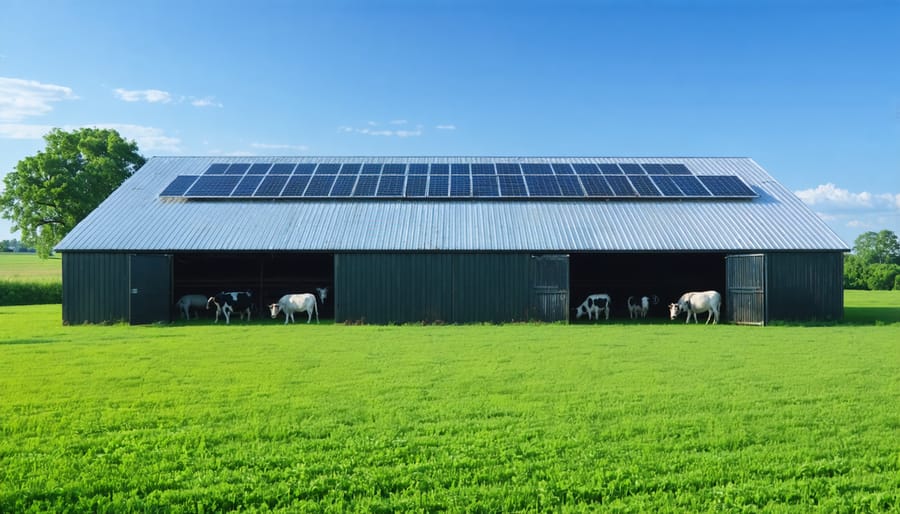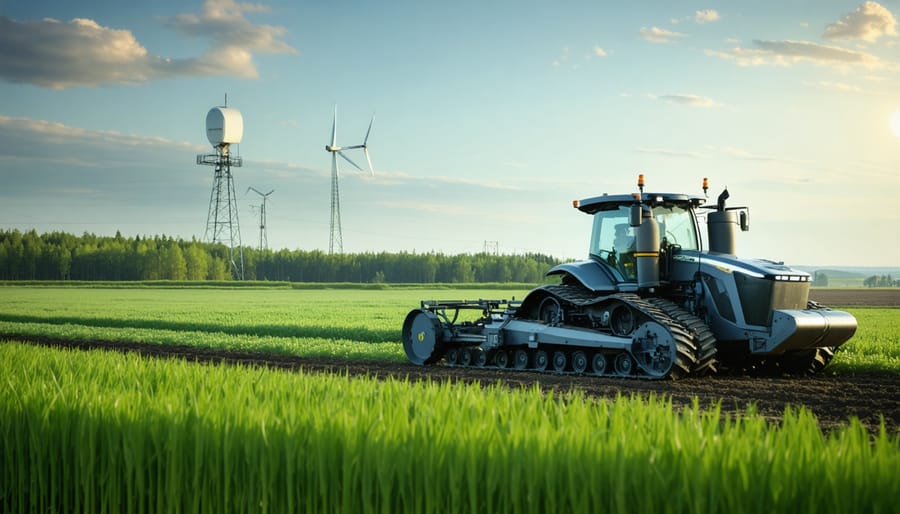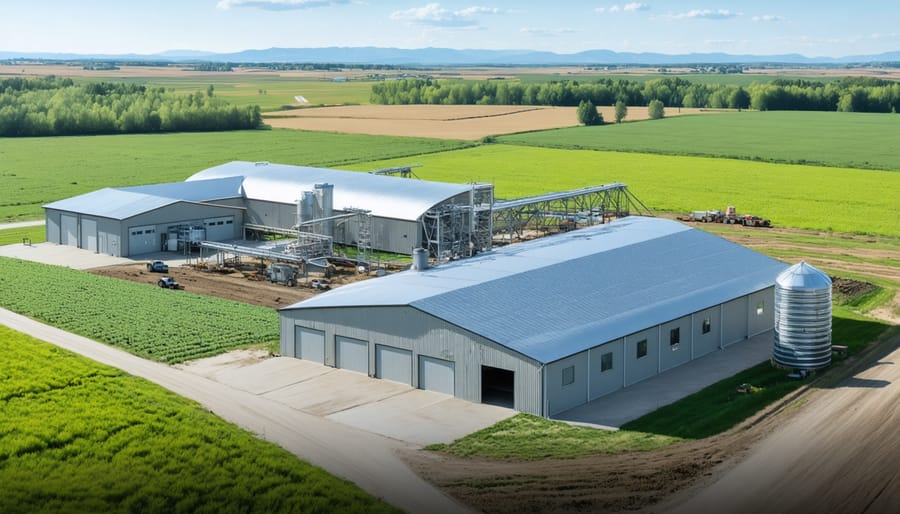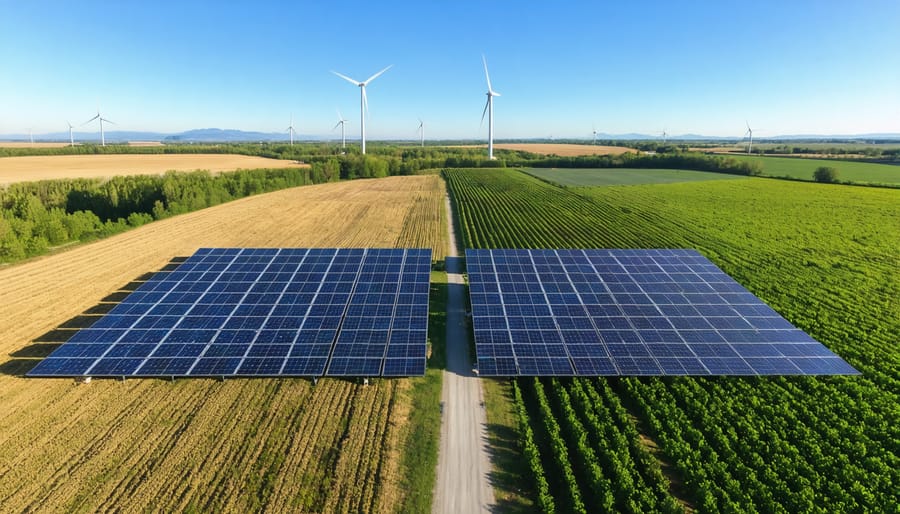The growing impact of global warming on Canadian livestock operations demands immediate attention and innovative solutions. As temperatures rise and extreme weather events intensify, implementing climate-adaptive livestock housing has become crucial for Alberta’s agricultural sustainability. Recent data from Agriculture Canada shows that heat stress alone reduces dairy production by up to 25% during extreme summer conditions, while properly adapted facilities can maintain productivity even as temperatures fluctuate.
Our research with local farmers reveals that livestock operations implementing climate-smart strategies are 40% more resilient to weather extremes than traditional setups. These adaptations not only protect animal welfare but also contribute to reducing the industry’s carbon footprint – a critical consideration given that livestock contributes approximately 14.5% of global greenhouse gas emissions.
For Alberta’s farming community, the intersection of global warming and livestock management presents both challenges and opportunities. By embracing innovative housing solutions, implementing heat-stress mitigation strategies, and adopting sustainable practices, our agricultural sector can lead the way in climate-adaptive farming while maintaining productive, profitable operations.
The Rising Challenge: Climate Impacts on Alberta’s Livestock
Temperature Trends in Alberta’s Agricultural Regions
Recent climate data from Alberta’s agricultural regions shows a concerning trend of increasing temperature extremes. Over the past decade, average summer temperatures have risen by 1.2°C, while winter temperature fluctuations have become more erratic. These changes significantly impact livestock welfare and productivity across the province.
Southern Alberta has experienced the most dramatic shifts, with more frequent heat waves exceeding 30°C during summer months. This has led many farmers to adopt smart climate adaptation technologies to maintain optimal conditions in their livestock facilities.
Data from Agriculture Alberta indicates that heat stress in cattle has increased by 15% since 2015, particularly affecting dairy operations in the Red Deer and Lethbridge regions. The Peace River area, traditionally known for its cooler climate, has also recorded unprecedented temperature spikes, forcing farmers to reassess their livestock housing strategies.
These trends suggest that Alberta’s agricultural sector must prepare for continued warming patterns. Many producers are already implementing adaptive measures, such as improved ventilation systems and enhanced monitoring tools, to ensure their livestock remain comfortable and productive year-round.
Heat Stress: The Hidden Productivity Killer
Heat stress poses a significant challenge for Alberta livestock producers, with both immediate and long-term effects on animal welfare and farm productivity. Dairy cows typically show reduced milk production when temperatures exceed 25°C, with potential losses of 10-20% during extreme heat events. Our local beef cattle are similarly affected, showing decreased feed intake and reduced weight gain when temperatures climb above 30°C.
Poultry operations face unique challenges, as birds are particularly sensitive to heat stress. Even brief exposure to temperatures above 32°C can lead to decreased egg production and compromised meat quality. Pigs, lacking sweat glands, are especially vulnerable to heat stress, with sows showing reduced fertility and growing pigs experiencing slower growth rates during hot spells.
Recent studies from Agriculture Canada show that heat stress costs Canadian livestock producers an estimated $45 million annually in lost productivity. Here in Alberta, where summer temperatures are becoming increasingly unpredictable, producers are noting longer recovery periods for affected animals. The good news is that with proper management strategies, including improved ventilation and targeted cooling systems, these impacts can be significantly reduced.
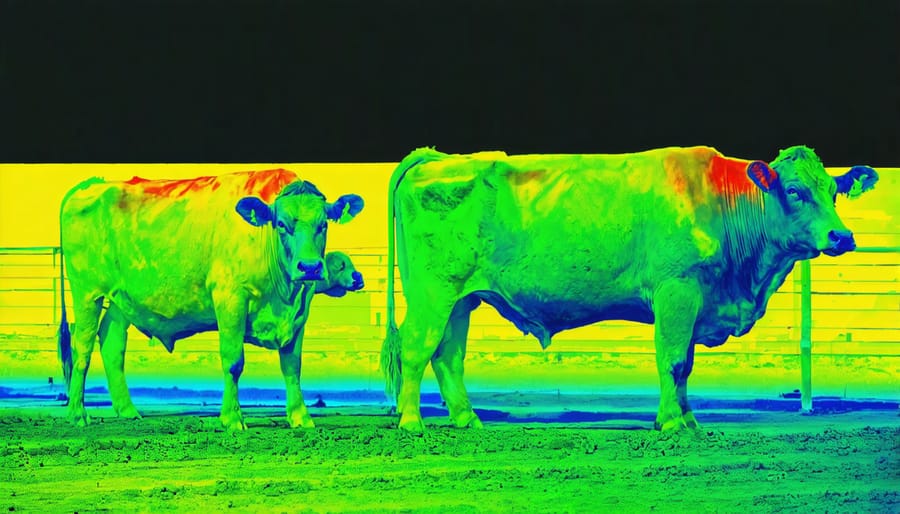
Smart Design Features for Climate-Resilient Barns
Natural Ventilation Systems
Natural ventilation systems have proven to be one of the most cost-effective solutions for Canadian livestock farmers dealing with rising temperatures. Here in Alberta, many farmers have successfully implemented these systems, which work with the natural airflow patterns to keep barns cool without relying heavily on electrical power.
Take the case of Dave Thompson’s dairy farm near Red Deer, where a simple ridge vent and adjustable side curtains system reduced indoor temperatures by up to 8°C during summer heat waves. “We saw a 15% decrease in our energy costs,” Thompson notes, “and our cattle showed notably less heat stress during extreme weather events.”
The key to success lies in understanding your barn’s orientation and local wind patterns. Most effective systems in Alberta incorporate:
– Ridge vents along the roof peak
– Adjustable side curtains
– Strategic placement of windbreaks
– Properly sized eave openings
The Lethbridge Research Centre has documented that farms using natural ventilation systems save an average of $2,800 annually in energy costs compared to mechanical systems. More importantly, these systems continue functioning during power outages, providing crucial protection during severe weather events.
Local agricultural extension services offer free consultations to help farmers design appropriate ventilation systems for their specific needs. Many farmers have found success by starting with a single building and expanding the system based on results.
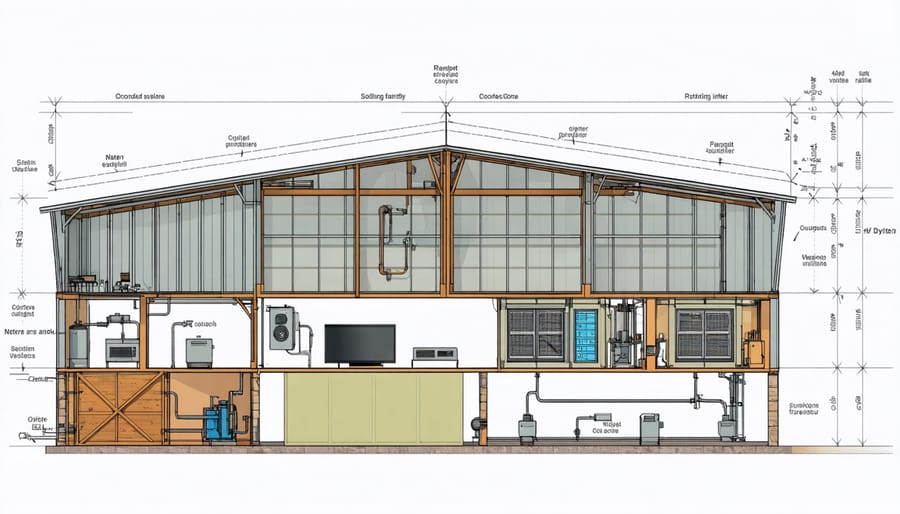
Energy-Efficient Cooling Solutions
In Alberta’s challenging climate, implementing energy-efficient cooling solutions for livestock facilities has become increasingly important. Modern efficient cooling systems combine innovative technology with sustainable practices to maintain optimal temperatures while reducing energy consumption.
Natural ventilation systems, strategically designed with adjustable panels and ridge vents, take advantage of Alberta’s wind patterns to create consistent airflow. These systems can be enhanced with automated controls that respond to temperature and humidity changes, ensuring your livestock remain comfortable throughout the day.
Many Alberta farmers are turning to solar energy solutions to power their cooling equipment. Solar-powered fans and misting systems offer cost-effective alternatives to traditional cooling methods, particularly during peak summer months when electricity demands are highest.
Evaporative cooling pads, when combined with proper insulation and reflective roofing materials, can reduce indoor temperatures by up to 10°C while using minimal energy. These systems are particularly effective in our region’s typically low-humidity conditions.
Local success stories show that implementing these cooling solutions can lead to improved animal welfare and reduced energy costs of 30-40% annually. Many systems qualify for provincial energy efficiency grants, making the initial investment more manageable for farmers looking to upgrade their facilities.
Insulation and Material Innovations
Recent advancements in barn insulation technology have revolutionized how we protect livestock from extreme weather conditions in Alberta. Modern spray foam insulation, with its superior R-value of 6 per inch, has become increasingly popular among local farmers, offering excellent temperature regulation while being cost-effective over time.
Many Alberta farmers are now incorporating innovative materials like reflective radiant barriers, which can reflect up to 97% of radiant heat during summer months while retaining warmth during winter. These barriers, when combined with traditional fibreglass or cellulose insulation, create a comprehensive thermal envelope that maintains stable barn temperatures year-round.
Phase-change materials (PCMs) are gaining traction in our region, particularly in dairy operations. These materials absorb excess heat during the day and release it at night, helping maintain consistent temperatures without additional energy input. Several farms near Red Deer have reported up to 30% reduction in heating and cooling costs after installing PCM panels.
Natural and recycled materials are also proving effective. Hemp-based insulation, produced right here in Alberta, offers excellent moisture control properties while supporting our local agricultural economy. Recycled denim insulation is another eco-friendly option that provides comparable performance to traditional materials while reducing environmental impact.
For smaller operations, double-wall construction with blown-in insulation has shown promising results, particularly in areas experiencing extreme temperature fluctuations. This method creates an effective thermal break while being more affordable for family farms.
Real Success Stories: Alberta Farms Leading the Way
The Miller Family’s Solar-Powered Dairy Barn
Located just outside Red Deer, the Miller family’s 200-head dairy operation has become a shining example of sustainable farming in central Alberta. In 2021, Tom and Sarah Miller transformed their traditional dairy barn into a solar-powered facility, reducing their carbon footprint while maintaining optimal conditions for their Holstein herd.
The Millers installed a 75-kilowatt solar array on their south-facing barn roof, which now powers their entire ventilation system, milk cooling equipment, and LED lighting. During Alberta’s sunny summer months, the system generates excess power that’s fed back into the grid, offsetting their winter energy costs.
“We used to spend about $2,500 monthly on electricity,” shares Tom Miller. “Now our average bill is down to $600, and the system will pay for itself in just over six years.”
The barn’s smart ventilation system, powered by solar energy, maintains temperatures between 15-20°C year-round. This has resulted in a 12% increase in milk production during extreme weather events, compared to their previous setup. The Millers also installed energy-efficient water recycling systems, which capture and reuse water from their cooling processes.
Local dairy farmer groups regularly tour the Miller facility, with over 200 Alberta farmers visiting in the past year alone. The project received partial funding through the Canadian Agricultural Partnership, making it an achievable model for other dairy operations in the region.
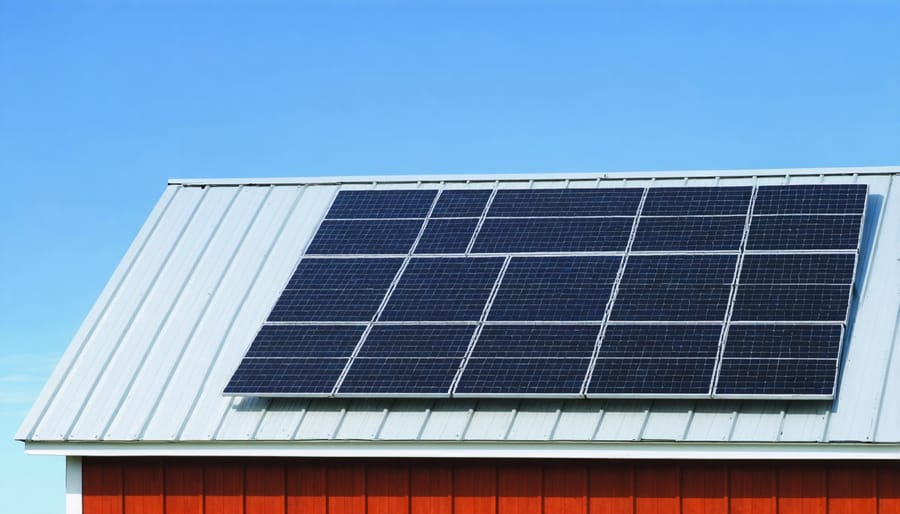
Mountain View Ranch’s Passive Cooling System
In the heart of southern Alberta, Mountain View Ranch has pioneered an innovative passive cooling system that’s garnering attention from farmers across the province. Ranch owner Sarah Thompson implemented a natural ventilation design that leverages the region’s characteristic wind patterns and geological features to maintain comfortable temperatures for her cattle throughout the summer months.
The system incorporates strategically placed windbreaks and shade structures that work with the natural landscape to create cooling corridors. Large deciduous trees planted along the eastern edge of the pastures provide morning shade, while purpose-built overhangs offer afternoon protection. The ranch’s location in a natural valley allows cool air to settle overnight, creating a microclimate that can be up to 5°C cooler than surrounding areas.
“We’ve seen a significant improvement in our cattle’s well-being since implementing these passive cooling measures,” explains Thompson. “Heat stress has decreased substantially, and we’ve maintained consistent milk production even during heat waves.”
The ranch’s design includes shallow pools fed by natural springs, positioned to maximize evaporative cooling effects. These water features, combined with carefully oriented buildings and ventilation channels, create a self-sustaining cooling system that requires minimal energy input.
What makes this system particularly noteworthy is its adaptability to different farm layouts and its low maintenance requirements. Several neighbouring farms have already begun implementing similar designs, creating a growing network of climate-resilient livestock operations in southern Alberta.
Implementation Guide: Getting Started with Your Barn Upgrade
Assessment and Planning Tools
To effectively evaluate your livestock facilities for climate resilience, several practical assessment tools are available to Alberta farmers. The Alberta Agriculture and Forestry Department offers a comprehensive Farm Infrastructure Assessment Checklist, which helps identify vulnerable areas in your current setup and prioritize improvements.
Start with the Building Condition Assessment Tool, designed specifically for Canadian agricultural structures. This spreadsheet-based resource helps track essential metrics like ventilation efficiency, insulation ratings, and structural integrity. When combined with drought-resistant farm solutions, these assessments provide a complete picture of your facility’s preparedness.
The Canadian Agricultural Partnership’s Climate Smart Self-Assessment Tool allows farmers to evaluate their operation’s climate vulnerability. This free online resource generates customized recommendations based on your specific location, livestock type, and facility characteristics.
Essential items to include in your assessment:
– Temperature monitoring systems
– Ventilation capacity measurements
– Water system efficiency ratings
– Emergency backup power capabilities
– Feed storage conditions
– Drainage system effectiveness
Consider working with local agricultural extension specialists who can provide hands-on guidance during the assessment process. Many regional offices offer free consultation services and can help interpret assessment results while suggesting practical, cost-effective improvements tailored to your operation’s needs.
Available Grants and Support Programs
Alberta farmers have access to several financial support programs designed to help implement climate-smart livestock management practices. The Canadian Agricultural Partnership (CAP) offers grants up to $250,000 for infrastructure improvements, including climate-controlled barns and ventilation systems. Specifically, the Environmental Stewardship and Climate Change Producer Program provides cost-sharing opportunities for farmers investing in sustainable practices.
The Alberta Farm Energy and Agri-Processing Program covers up to 70% of costs for energy-efficient upgrades to livestock facilities, including LED lighting and improved insulation systems. Farmers can also access the Farm Technology Program, which provides funding for smart monitoring systems and automated climate control equipment.
Local Agricultural Societies offer smaller grants ranging from $5,000 to $25,000 for community-based climate adaptation projects. The Farm Credit Canada (FCC) provides specialized loans with competitive interest rates for environmental improvements to livestock operations.
For Indigenous farmers, the Indigenous Agriculture Partnership Program offers additional funding options up to $100,000 for sustainable farming practices. New farmers can benefit from the Beginning Farmer Loan Program, which includes provisions for climate-adaptive infrastructure.
Contact your local Agricultural Services Board or the Alberta Agriculture and Forestry office to learn more about application deadlines and eligibility requirements. Free grant-writing assistance is available through regional agricultural extension offices to help you maximize your funding opportunities.
As Alberta’s agricultural community continues to adapt to climate challenges, it’s clear that the relationship between global warming and livestock management requires our immediate attention and action. Throughout this discussion, we’ve explored how rising temperatures affect animal welfare, productivity, and farm operations, while highlighting practical solutions that work for Canadian farmers.
The evidence shows that implementing climate-smart housing solutions, such as improved ventilation systems and strategic shade structures, can significantly reduce heat stress in livestock while maintaining production levels. Many Alberta farmers are already leading the way, demonstrating that small changes can yield substantial results in both animal comfort and operational efficiency.
Remember, you’re not alone in this journey. Our agricultural community is built on sharing knowledge and supporting one another. Whether you’re considering upgrading your barn ventilation, installing new cooling systems, or redesigning your pasture layout, there are resources and experts ready to help you make informed decisions.
Take the first step today by assessing your current livestock housing setup and identifying areas for improvement. Connect with local agricultural extension services, join farmer-led initiatives, or reach out to neighbouring farms that have successfully implemented climate adaptation strategies. Together, we can build a more resilient and sustainable future for Canadian agriculture while protecting our valuable livestock resources.
The time to act is now – your animals, your farm’s productivity, and our collective agricultural future depend on it.

